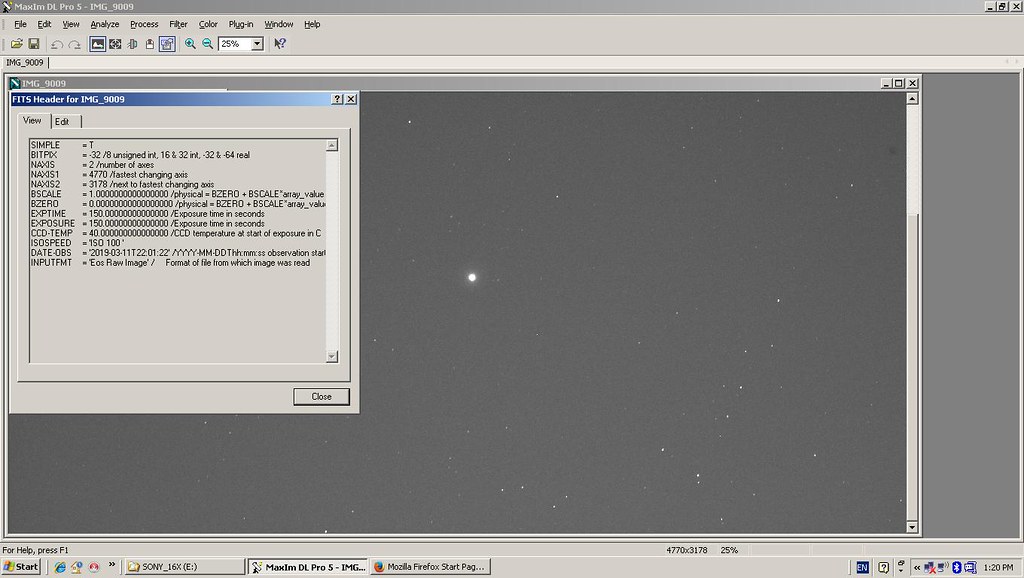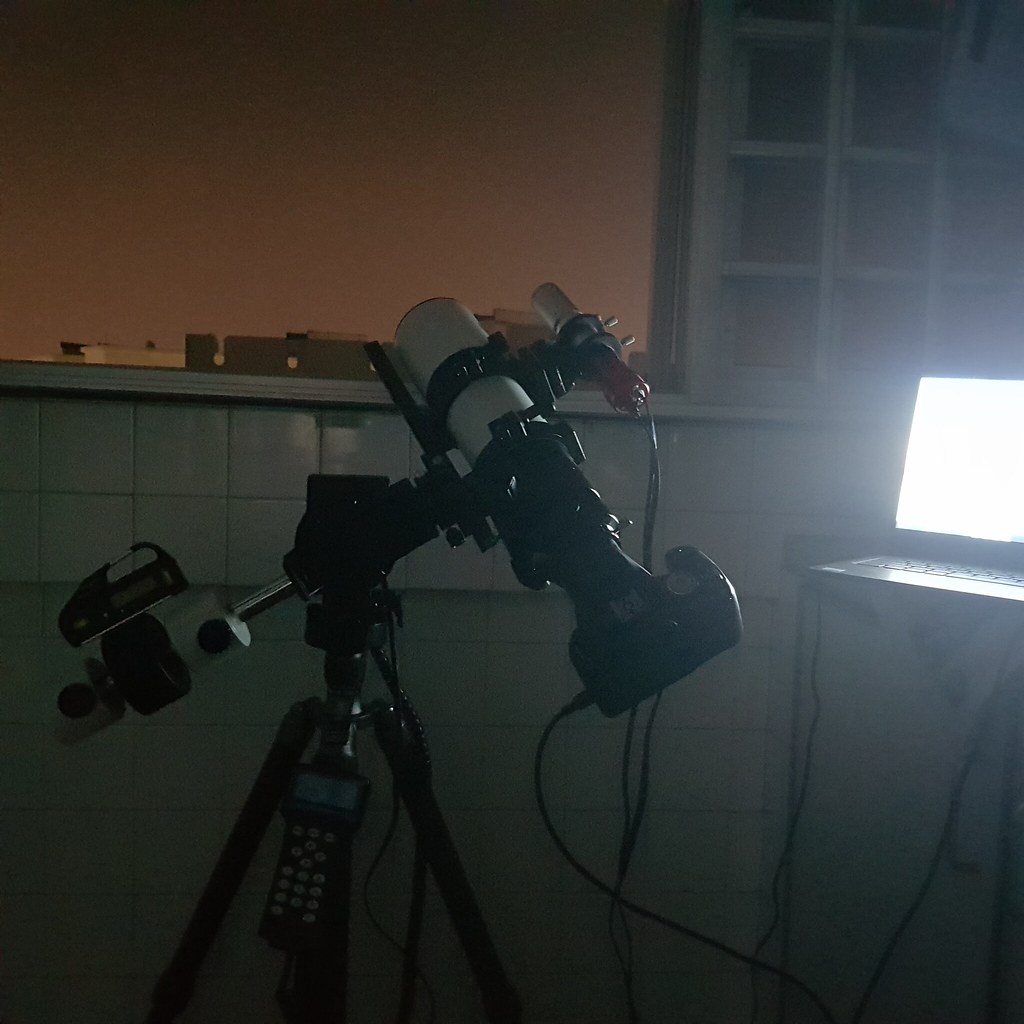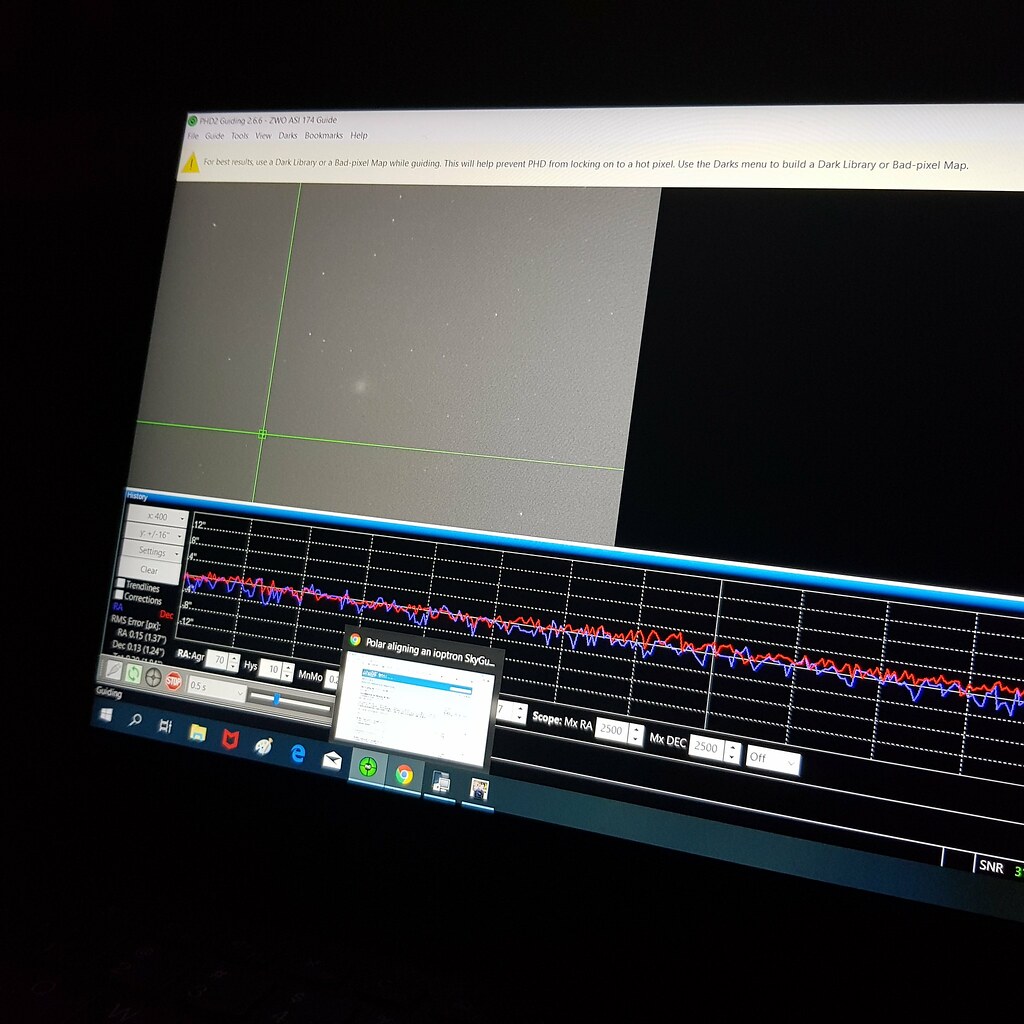Hi all,
I was just wondering if anyone in Singapore has used an iOptron SkyGuider Pro? Would love to be able to test it out if anyone has them. I'm planning to get a light photography set-up, but that may run me rather close to the theoretical limit of the SGpro, hence it would be nice if I could have a feel of its capabilities. Do let me know if you use one, and please offer your opinions!
iOptron SkyGuider pro
Re: iOptron SkyGuider pro
Hi. I am considering SkyGuider Pro too. I checked the iOptron SmartEQ Pro+, is basically cheaper with full GOTO & German Equitorial Mount too. Hoping to receive feedback from the forum. Thanks.
Re: iOptron SkyGuider pro
I just owned a Ioptron SkyGuider Pro recently, measured its Periodic Error at 40 + pk-pk but found it conflicting to my actual test, surprisingly, my actual test on Pollux for 2.5 mins shot at ISO 100 found stars to be as good for mount that is of 20 + pk-pk, don't know what went wrong.
 Pollux J by Peter Loo, on Flickr
Pollux J by Peter Loo, on Flickr
 Pollux J by Peter Loo, on Flickr
Pollux J by Peter Loo, on FlickrRe: iOptron SkyGuider pro
No guiding for this, due to weight consideration, Alt Polar alignment done through putting Digital Level Meter on mount top surface, Az polar alignment was done through Meade 12 mm illuminated eyepiece this round (to simulate situation for forgetting to bring guide scope), so it was found to be a little to the West using PHD later. "Goto" using manual computation of Hour Angle and RA position obtained through Wiki for Pollux, Dec set to 90 deg - 28deg + 1.35 deg before slewing to target.
Last edited by PETER LOO on Thu Nov 09, 2023 3:35 pm, edited 3 times in total.
Re: iOptron SkyGuider pro
For EQ mounts that do not come with digital setting circle, an alternative way to search for deep sky object is to use "Digital Level Meter Circle setting". This required manual computation of Hour Angle H.A. in which: ((H.A. = LST - RA of the object)). LST implies Local Sidereal Time, RA implies Right Ascension. There is a hand phone app called "My Sidereal time" that can be downloaded. RA and Dec (Declination) of the object example, M45 is available from wiki. As for Dec Arm setting, it is = 90 deg - Dec of object + current latitude positioned at zero hour angle (transit).
 20190330_235133 by Peter Loo, on Flickr
20190330_235133 by Peter Loo, on Flickr
 20190330_235909 by Peter Loo, on Flickr
20190330_235909 by Peter Loo, on Flickr
 20190330_235951 by Peter Loo, on Flickr
20190330_235951 by Peter Loo, on Flickr
 Omega Centauri 30 Mar 2019 by Peter Loo, on Flickr
Omega Centauri 30 Mar 2019 by Peter Loo, on Flickr
 SkyGuider Pro Guided RA by Peter Loo, on Flickr
SkyGuider Pro Guided RA by Peter Loo, on Flickr
 SkyGuider Pro Guided Dec by Peter Loo, on Flickr
SkyGuider Pro Guided Dec by Peter Loo, on Flickr
 20190330_235133 by Peter Loo, on Flickr
20190330_235133 by Peter Loo, on Flickr 20190330_235909 by Peter Loo, on Flickr
20190330_235909 by Peter Loo, on Flickr 20190330_235951 by Peter Loo, on Flickr
20190330_235951 by Peter Loo, on Flickr Omega Centauri 30 Mar 2019 by Peter Loo, on Flickr
Omega Centauri 30 Mar 2019 by Peter Loo, on Flickr SkyGuider Pro Guided RA by Peter Loo, on Flickr
SkyGuider Pro Guided RA by Peter Loo, on Flickr SkyGuider Pro Guided Dec by Peter Loo, on Flickr
SkyGuider Pro Guided Dec by Peter Loo, on Flickr
Last edited by PETER LOO on Thu Nov 09, 2023 3:33 pm, edited 3 times in total.
Re: iOptron SkyGuider pro
The above object is Omega Centauri, RA: 13h 26.43 m, Dec:-47.46 Deg. This time the mount is guided via a lighter guider set up.
SkyGuider Pro Dec arm is too weak for mounting all the above stuff without doing a proper modification, and attached items might just fall off if not careful.
SkyGuider Pro Dec arm is too weak for mounting all the above stuff without doing a proper modification, and attached items might just fall off if not careful.
Re: iOptron SkyGuider pro
Used a much heavier mount GPD2 with GOTO to capture Centaurus A from my 9th floor kitchen window facing South
 Centaurus A 05 Apr 2019 by Peter Loo, on Flickr
Centaurus A 05 Apr 2019 by Peter Loo, on Flickr
Mount: GPD2 with StarBook-S, guided by ZWO ASI-174M Mini.
Imaging Scope: TS APO Ttiplet 90mm / 600mm
Camera: Canon 500-D Baader Mod, ISO 800, 60s X 40 (with Orion Sky-Glow filter)
 Centaurus A 05 Apr 2019 by Peter Loo, on Flickr
Centaurus A 05 Apr 2019 by Peter Loo, on FlickrMount: GPD2 with StarBook-S, guided by ZWO ASI-174M Mini.
Imaging Scope: TS APO Ttiplet 90mm / 600mm
Camera: Canon 500-D Baader Mod, ISO 800, 60s X 40 (with Orion Sky-Glow filter)